How to Protect Yourself From Dollar Collapse [2024 UPDATE]
The global economy is in a bit of a slowdown mode. Growth is expected to be sluggish in 2024, around 2.7%, after a slightly better 2023.
Pair this with the introduction of quantitative easing and you probably start to wonder how to protect yourself from dollar collapse. While this may seem unattainable to some, it is a very realistic scenario given the global situation. In such conditions, it becomes crucial for individuals to protect their wealth from potential risks such as the collapse of the dollar.
In this article, we will explore the subject of dollar collapse, and provide practical strategies on how to protect yourself from dollar collapse. Let’s start by explaining the reasons that could lead to the collapse of the US dollar.
Table of contents
What is a Dollar Collapse?
The collapse of the dollar itself refers to a significant decline in the value and purchasing power of the US currency. This can happen due to factors such as economic crises, excessive money printing, rising national debt, or geopolitical events.
What Could Lead to Dollar Collapse?
Up until 1971, the US dollar was backed by the country’s reserve in gold. What was more commonly known as the gold standard would give real value to money, as each and every dollar was reflecting a certain amount of gold.
The public would deposit the precious metal in the bank and receive paper certificates indicating the value they had safely stored. It as the earlier version of cash, only with a “gold certificate” step on the left side of the bill.
These paper representations of value could be used in trade, similar to how we use cash today, and eventually given back to the bank to redeem gold. This system was working, as it brought a sense of security and trust to the public. People would deposit their precious metals into the bank, receiving in return paper certificates that attested to the value of their gold. When they wanted to get the actual gold, they could simply return the certificates to the bank and redeem their funds.
But, in the early 70’s, President Richard Nixon changed this model, by removing convertibility of dollars into gold. Economists will forever remember this day as the biggest and most risky experiment of money.
In one instance, the most powerful currency of the world was backed by nothing but blind trust from the public. At that point, the US started printing large amounts of “unbacked” money and continues to do so ever since.
So what happens when the dollar collapses? When looking at the issue in question, there are two conditions that need to be met before the dollar collapses:
- There must be a weakness in the value of the dollar
- There must be a viable and more promising alternative
In short, there needs to be a valid reason for the public to drop the US dollar and there must also be an alternative option for value storage. If these conditions are not met, the dollar will remain the leading currency in the global economy.
Fast forward to the present day, it is important to reflect on the significance of that event. To a large extent, the dollar now dances on the tightrope of trust. It serves as a cautionary reminder on how to protect your money from dollar collapse – let’s see how.
Why Do Currencies Collapse?
The stability of a currency is directly related to its trust from the public. A lack of faith in a certain currency (whether it is for stability or usefulness) leads to an eventual collapse.
And we can see this theme repeat in history. Since the early 1900s, several countries have experienced currency collapses.
Once lack of faith starts to become prevalent, trouble entails. And, at the moment, the US dollar is in an unfavorable position. To understand this statement, let’s explore the pros and cons of the US dollar.
Strengths of USA Dollar
- Being a reserve currency, the US Dollar is the primary currency used in trade and international transactions. It was only a few years ago (2016) when the International Monetary Fund (IMF) qualified 4 more reserve currencies (EUR, JPY, GBP).
- Most currencies are pegged to the value of the US Dollar. This does not only show how powerful the American economy currently is but it also proves how badly the global economy would suffer if the dollar collapses.
- When the US dollar strengthens against competing currencies, import becomes cheaper and so does foreign travel.
Weaknesses of USA Dollar
- The main disadvantage of the U.S. dollar is that it only exists through government fiat. This is a major issue for most major national currencies and is seen as normal nowadays since they are no longer backed by gold. However, the USA is by far the country that takes the most advantage of this situation, by printing way more money than other countries.
- Emerging market economies are at risk, given that they require US dollar reserves and end up paying more to obtain them. This issue is especially prevalent in emerging market economies.
5 Reasons Dollar Could Collapse
The US Dollar is one of the strongest currencies in the world. While unlikley, there is a non-zero probability of its collapse purely based on how fiat currencies function.
So, what could trigger an actual collapse of the US dollar? Let’s take a look at some of the most realistic scenarios.
1. Printing Money Incessantly
The US has been printing its way out of financial troubles for the last half-century. And while most people were unaware that this is even possible, the COVID-19 pandemic exposed just how easy it is to create money out of thin air. From March until June 2020, the US printed more than $20 trillion and bankers are concerned that the amount won’t resolve the damage done to the economy.
To understand what exactly happens when new money is printed and why it is a recipe to disaster, make sure you watch the video of Robert Kiyosaki, listed above.
2. Giving Money Away for Free in the USA
During the COVID-19 pandemic, every adult US citizen received an “airdrop” of $1200 USD. This cheque was meant to ease the difficulties created due to a nation-wide lockdown. Several countries followed suit, each offering stimulus cheques to citizens that were unable to work.
3. Other Currency Alternatives
Recent economic developments, including interest rate changes and fluctuating savings value, have prompted a broader discussion about the dynamics of the financial system. These changes have led some to explore different perspectives on wealth distribution and financial equity.
In response to these shifts, there’s an increasing public interest in exploring alternative financial solutions to safeguard personal assets.
The concept of a dollar decline is often linked to the emergence of a more promising alternative. This context has brought attention to options like Bitcoin, among others, as potential means to diversify and protect wealth.
While Bitcoin is a relatively new and evolving financial tool, it serves as an example of the growing interest in systems that offer a different approach from traditional central bank-controlled frameworks.
4. Economic Events That Could Trigger Dollar’s Collapse
Geopolitical uncertainty is always an issue. The potential of a next financial crisis could be the turning point in the global economic order. The real question is what kind of event could act as the tipping point. World wars, pandemics, and an uncontrolled money-printing mentality could all trigger the collapse of the US dollar.
5. Foreign Countries Drop the US Dollar
A complete collapse is more likely to occur due to events that crush the world’s confidence in the US dollar. In total, foreign countries own more than $6 trillion in U.S. debt. China and Japan own the majority of this debt. If they decide to drop their holdings, they could cause a global panic which would lead to a major recession.
How to Prepare for the Collapse of the Dollar?
The U.S. dollar currently holds the status of the world’s primary reserve currency. However, we are witnessing signs of ‘dedollarization’, a process where countries reduce their reliance on the U.S. dollar in international trade, finance, and as a reserve currency.
So, what happens if the dollar collapses and how to prepare?
In order to prepare for the US dollar collapse, you need to understand the mechanics behind it. The stability of most currencies lies in one crucial factor: the trust placed in it by the public. When confidence wanes for whatever reason, the public opinion becomes less optimistic and a currency collapse becomes increasingly likely.
Wth the rising trend of dedollarisation, many countries are exploring alternatives to reduce their dependence on the US dollar. Therefore, the US dollar is gradually finding itself in an unfavorable position, signifying a shift in the global economy that may impact the value and stability of the dollar.
This shift highlights the importance of using a number of strategies, including diversification, to protect yourself from potential consequences if the dollar were to lose its dominance.
1. Diversify Your Investments
The best way to lower risk and protect your valuables is through diversification. What you may want to do is find a few promising investments and spread your savings among them.
When it comes to preserving the value of your assets and thriving in times of economic downturn, it’s essential to seek advice from experienced investors. Diversification is a fundamental principle in risk management. By spreading your savings among different investment options, you can lower your risk exposure. Consider these assets as what to own when the dollar collapses:
Gold
For hundreds of years, gold has been one of the most recognized investment options. Further, precious metals often serve as a hedge against currency inflation.
When looking at its price performance over the past 20 years, we can quickly understand why people love it. The precious metal has grown more than 250% in value in the last two decades alone, and is known to be one of the best stores of value for centuries. We have written an article that will help you learn more about gold and how to invest in it.
Bitcoin
Bitcoin was created just over a decade ago, to help people protect their funds from the government and the banking system. Over its lifetime, it has seen an incredible appreciation in value, going from just a few cents to over $70.000 per coin at the time of writing. At the moment, Bitcoin is approximately 50% below its peak price and has just gone through a halving. Based on these facts we are very confident that Bitcoin will help you not only protect your money, but also multiply it.
Federal Bond funds
There are certain types of bond funds that are more popular with low-risk investors. One of the safest options to protect your money are funds comprised of US Treasure bonds. Investors that choose this option are practically immune to credit risk. This happens because of the government’s systems that eliminate the risk of default (money printing, tax levy, etc.). Keep in mind that this option is applicable to US citizens only.
Collectibles
Many people are unaware of the opportunities that lie in the collectibles market. Baseball cards, factory-sealed video games, and limited edition items are something to keep your eye on. Not only do they preserve (and grow) your value but there is a huge demand to obtain them, which makes them easy to trade.
Antiques & paintings
These are not meant for the small-time investor but rather for people that are looking to protect significant amounts of value. It is also a lot harder to find and purchase these types of items. Ideally, you’d want to consult with an expert that has experience in the sector and is able to help you find the best deals.
Real estate
Finally, one of the strategies that entail the lowest amount of risk is real estate. When you buy a fixer-upper or a rental property, people will need a home no matter how the economy performs. So consider using this option to ensure steady recurring cash flow.
2. Buy Using DCA Strategy
Dollar Cost Averaging (DCA) is one of the best investment strategies when it comes to risk management. We have previously detailed the strategy in one of our blog posts so if you’re unfamiliar with the term make sure you check it out.
Essentially, DCA is a strategy that involves buying small amounts of a particular investment (Bitcoin, Stocks, etc.) over a long period of time. Doing so has generally shown to be a great way to avoid market volatility and minimize the risk involved.
The reason why many people dislike this strategy is that it requires a lot of patience and focus on a particular end goal. It’s the exact opposite of a “get rich quick” mindset.
To understand how rewarding DCA can be, you would need to understand how effective it is for very volatile assets. This website provides an interesting tool to help you calculate how much your Bitcoin investment would have grown in value if you invested at an earlier point in time.
The image above shows an example of a successful DCA strategy. An investor who, over a course of 3 years, has been investing $10 per week would have grown the value of their funds by 119,49%.
If you are interested to learn how this same strategy applies to the stock market, make sure you watch the video below:
3. Avoid Going Into Debt
This one is a no-brainer and yet so underestimated. Since 80% of Americans are in debt this advice may feel more like a guilt-trip that valuable advice.
If you belong to the majority, don’t worry. Just make sure to pay off your debts as soon as possible. Being caught in the chains of debt could send you in a downward spiral if the economy suddenly collapses.
The less you are dependent on the banking system the easier it will be for you to store your wealth into a diverse range of safe assets.
What Happens If the US Dollar Collapses?
If the U.S. dollar were to collapse, it would lead to significant economic and financial consequences, both domestically and globally, given the dollar’s role as the world’s primary reserve currency. The impact would be multifaceted:
- Global Economic Turbulence: Since many international transactions are conducted in U.S. dollars, its collapse would create chaos in global markets. Countries holding large amounts of U.S. dollars in their reserves could see the value of their reserves plummet, leading to economic instability.
- Inflation in the U.S.: A collapse of the dollar would lead to hyperinflation in the United States. The cost of imported goods would skyrocket, severely impacting consumers and businesses.
- Interest Rates: The U.S. would likely face soaring interest rates, making borrowing more expensive. This could lead to a credit crunch, affecting investments, consumer spending, and overall economic growth.
- Investment Shifts: There would likely be a significant shift in global investment. Investors would seek safer assets, potentially leading to a rise in the value of other currencies, gold, cryptocurrencies or other commodities.
- Trade Imbalances: U.S. exports would become cheaper, potentially benefiting U.S. exporters. However, the cost of imports would rise dramatically, affecting supply chains and consumer prices.
- Geopolitical Consequences: The U.S.’s geopolitical influence, which is partly underpinned by the dollar’s dominance, might diminish. Other currencies, like the Euro or the Chinese Yuan, could gain prominence.
- Debt Repayment Challenges: The U.S. government and American entities with debt denominated in foreign currencies would find it more expensive to service their debt.
In short, the USA would experience hyperinflation, as previously seen with countries like Venezuela.
It’s important to note that a complete collapse of the U.S. dollar is considered unlikely by most economists, given the extensive global reliance on the dollar and the size and strength of the U.S. economy. However, understanding these potential impacts helps in appreciating the dollar’s global significance.
Wrapping Up
You should now have a better idea of how to protect yourself from dollar collapse. In this article, we discussed why, when, and how the financial system could potentially experience a major “reset”. More specifically, we looked into the following:
- The reasons that could lead to dollar collapse
- How soon we may experience a dollar collapse
- How to protect yourself from dollar collapse
- What happens when (and if) the dollar collapses
With this new information, you will be able to make better decisions for your savings. Make sure you pay special attention to the alternative options you should consider, in order to protect and hopefully grow your wealth.
Keep in mind that nothing in this article consists of financial advice. We share this information to help you educate yourself and give you direction to further continue your research.
FAQ
Will gold price go up in 2024?
According to J.P. Morgan Research, gold prices are expected to reach new highs in 2024, with a forecasted peak of $2,300 per ounce in 2025. This prediction is based on anticipated Federal Reserve interest rate cuts and an easing of inflation from 40-year highs seen in mid-2022.
Why is the Dollar falling?
The US dollar experiences a long-term change in value which is more commonly known as inflation. After Nixon’s decision to “unpair” the dollar from the gold standard, inflation became relative to the new amount of US dollars being printed. The more money being printed, the less valuable this money becomes.
An interesting (but scary) thing you can do to better understand the effect of inflation on the economy is to use this calculator. It perfectly illustrates the change in the buying power of the US dollar.
What is the strongest currency in the world?
The strongest currency in the world is determined by various factors such as stability, economic performance, and global demand. Some of the commonly recognized strong fiat currencies include the US Dollar, the Euro, the British pound, and the Japanese yen.
What happens to gold when the Dollar falls?
When the value of the US dollar decreases, the price of gold often tends to rise. Gold is often considered a safe-haven asset and a hedge against inflation. During periods of a weakening dollar, investors may turn to gold, leading to an increase in demand and, consequently, an increase in its price. However, the relationship between the US dollar and gold can be influenced by various factors and may not always follow a predictable pattern.
Why crypto instead of fiat?
Cryptocurrencies provide a range of advantages over traditional fiat currencies. With decentralization, cryptocurrencies operate without a central authority, ensuring individuals have more control over their funds. It also enables higher security measures through advanced cryptographic techniques, as well as speed and efficiency. Additionally, cryptocurrencies offer investment opportunities as potential hedges against inflation and diversification from traditional assets.
What is the safest currency?
When considering the historical performance of different currencies, the Norwegian Krone stands out for the following reasons:
- The central bank of Norway, which is the issuer of new NKR, holds 23.3% of the capital ratio, which is among the highest in the world (when compared to other central banks)
- Norway has zero net debt, unlike most other countries.
- Since Norway is not part of a supranational body (e.g. European Union) it is not responsible for bailing out other countries.
- Finally, NKR is not pegged to other currencies, so it remains unaffected in case other currencies go bust.
Keep in mind that we are simply pointing out the currency that we believe has the lowest risk. We do not present this information as financial advice for investment and speculation. But it might be worth considering moving part of your funds into NKR if you are still looking on how to protect yourself from dollar collapse.
Disclaimer: Don’t invest unless you’re prepared to lose all the money you invest. This is a high‑risk investment and you should not expect to be protected if something goes wrong. Take 2 mins to learn more at: https://go.payb.is/FCA-Info
![How to Protect Yourself From Dollar Collapse [2024 UPDATE]](https://paybis.com/blog/wp-content/uploads/2020/06/How-to-Protect-Yourself-From-Dollar-Collapse.jpg)
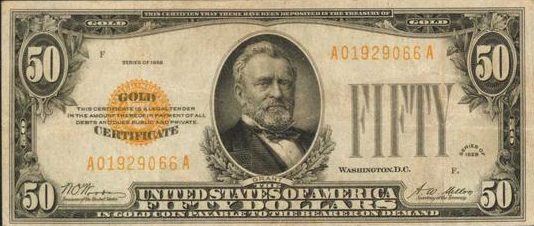
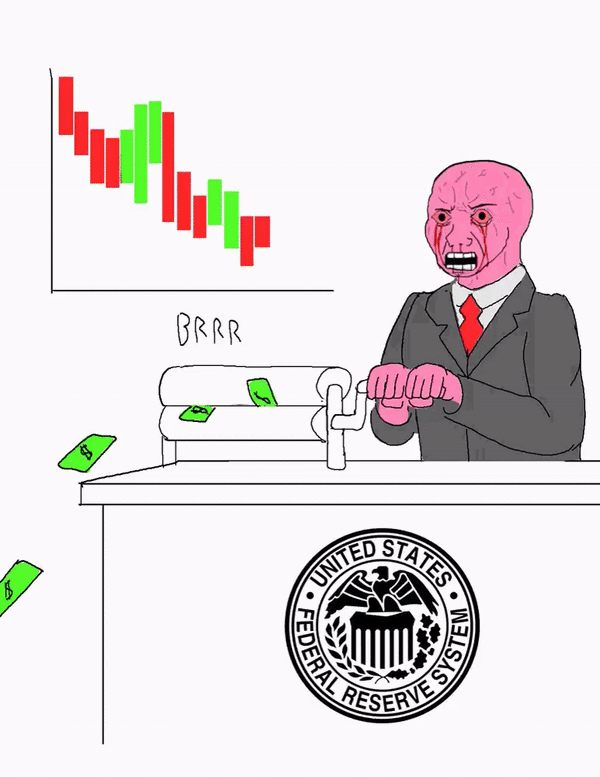
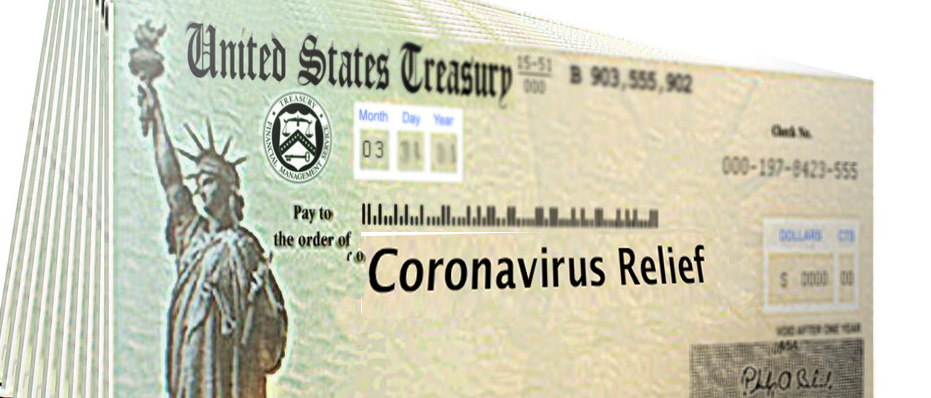
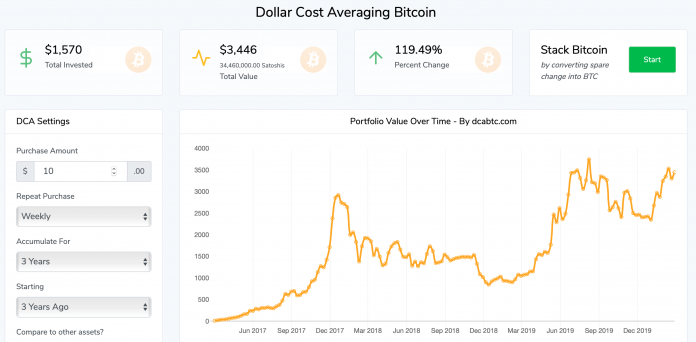
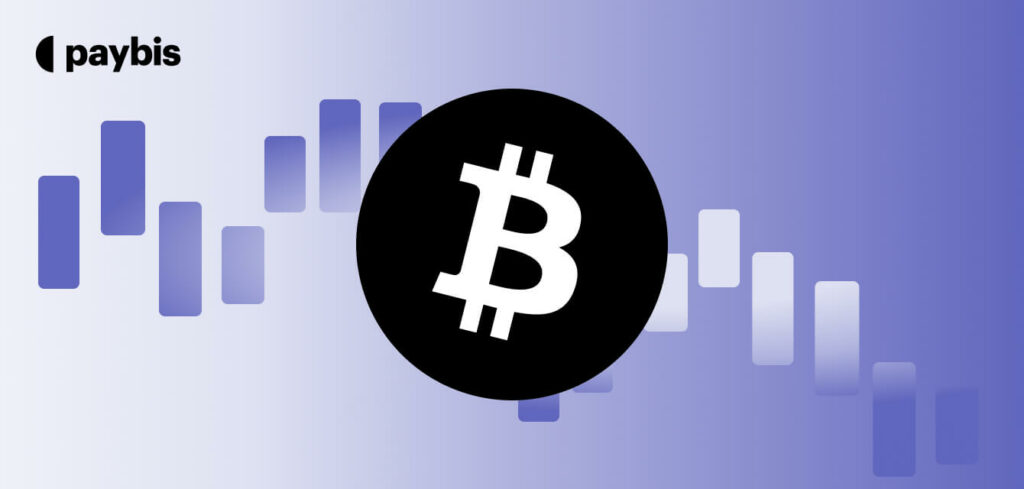

I cannot find the Krone on Fidelity . NKR , KR , etc does not show the Norwegian Krone .
Several digital wallet apps allow you to exchange your currency (mostly apps that offer debit cards aimed towards travelers). Fidelity doesn’t seem to be the best option for this type of trading.
Would Malaysia currency be simular to Norway banking if usd is converted to there currency
We can’t know this for sure as each government takes independent decisions. That being said it would be wise to store some of your wealth in Bitcoin to protect yourself in case of a potential economic collapse caused by massive inflation of the US dollar.